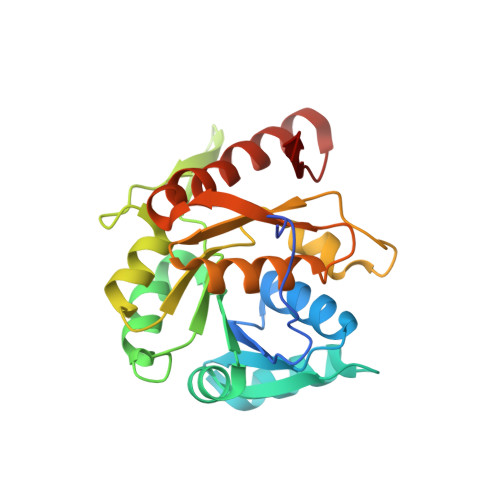Isolation and characterization of a thermostable F420:NADPH oxidoreductase from Thermobifida fusca.
Kumar, H., Nguyen, Q.T., Binda, C., Mattevi, A., Fraaije, M.W.(2017) J Biological Chem 292: 10123-10130
- PubMed: 28411200
- DOI: https://doi.org/10.1074/jbc.M117.787754
- Primary Citation of Related Structures:
5N2I - PubMed Abstract:
F 420 H 2 -dependent enzymes reduce a wide range of substrates that are otherwise recalcitrant to enzyme-catalyzed reduction, and their potential for applications in biocatalysis has attracted increasing attention. Thermobifida fusca is a moderately thermophilic bacterium and holds high biocatalytic potential as a source for several highly thermostable enzymes. We report here on the isolation and characterization of a thermostable F 420 : NADPH oxidoreductase (Tfu-FNO) from T. fusca , the first F 420 -dependent enzyme described from this bacterium. Tfu-FNO was heterologously expressed in Escherichia coli , yielding up to 200 mg of recombinant enzyme per liter of culture. We found that Tfu-FNO is highly thermostable, reaching its highest activity at 65 °C and that Tfu-FNO is likely to act in vivo as an F 420 reductase at the expense of NADPH, similar to its counterpart in Streptomyces griseus We obtained the crystal structure of FNO in complex with NADP + at 1.8 Å resolution, providing the first bacterial FNO structure. The overall architecture and NADP + -binding site of Tfu-FNO were highly similar to those of the Archaeoglobus fulgidus FNO (Af-FNO). The active site is located in a hydrophobic pocket between an N-terminal dinucleotide binding domain and a smaller C-terminal domain. Residues interacting with the 2'-phosphate of NADP + were probed by targeted mutagenesis, indicating that Thr-28, Ser-50, Arg-51, and Arg-55 are important for discriminating between NADP + and NAD + Interestingly, a T28A mutant increased the kinetic efficiency >3-fold as compared with the wild-type enzyme when NADH is the substrate. The biochemical and structural data presented here provide crucial insights into the molecular recognition of the two cofactors, F 420 and NAD(P)H by FNO.
- From the Molecular Enzymology Group, Groningen Biomolecular Sciences and Biotechnology Institute, University of Groningen, Nijenborgh 4, 9747 AG Groningen, The Netherlands.
Organizational Affiliation:


















